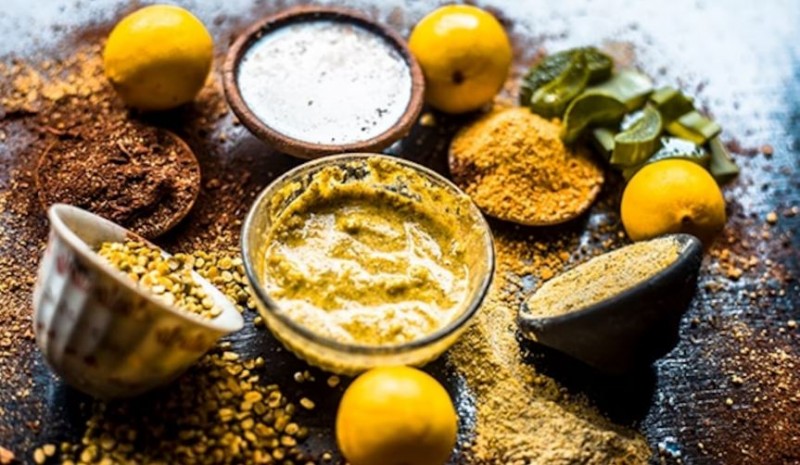
In the realm of skincare, there is a timeless beauty secret that hails from (how to make ubtan at home) the heart of ancient traditions - Ubtan. This age-old concoction, rooted in the Indian subcontinent, has garnered renewed attention in recent times for its natural and effective approach to achieving a radiant and glowing complexion. As a news reporter, let's delve into the art of creating Ubtan at home and explore its (how to make ubtan at home) rejuvenating benefits.
The Essence of Ubtan
Ubtan, a Sanskrit word, translates to "to apply on the body." With its origins tracing back thousands of years, this traditional beauty regimen was often used in pre-wedding ceremonies and other celebratory rituals to enhance one's natural beauty. Ubtan is crafted from a blend of various natural ingredients, each chosen for its unique properties that contribute to skin health.
The Ubtan Recipe Unveiled
Creating Ubtan at home is a simple yet creative process, allowing for customization based on individual skin types and concerns. Here's a basic Ubtan recipe that serves as a canvas for crafting your personalized blend:
Ingredients:
Chickpea Flour (Besan) - 2 tablespoons
Turmeric Powder - 1/2 teaspoon
Sandalwood Powder - 1 teaspoon
Raw Milk - 2 tablespoons
Rose Water - 1 tablespoon
Honey - 1 teaspoon (optional)
Yogurt - 1 tablespoon (for oily skin) / Cream (for dry skin)
Instructions:
In a mixing bowl, combine chickpea flour, turmeric powder, and sandalwood powder.
Slowly add raw milk to the dry mixture and stir to form a paste.
Incorporate rose water and, if desired, honey for added moisture and antibacterial benefits.
Depending on your skin type, choose yogurt for oily skin or cream for dry skin. Mix this into the paste until you achieve a consistent texture.
The Science Behind Ubtan
Each ingredient in Ubtan serves a specific purpose that contributes to the overall glow and health of the skin.
Chickpea Flour (Besan): Rich in proteins and antioxidants, chickpea flour helps in exfoliating dead skin cells, removing impurities, and brightening the complexion.
Turmeric Powder: Known for its anti-inflammatory and antiseptic properties, turmeric helps combat acne, reduce redness, and even out skin tone.
Sandalwood Powder: This ingredient is renowned for its cooling and soothing effects. It helps in reducing skin irritation, inflammation, and enhancing overall skin radiance.
Raw Milk: The lactic acid in milk acts as a gentle exfoliant, removing dead skin cells and promoting the growth of new, healthy skin cells. It also provides hydration and nourishment.
Rose Water: With its natural astringent properties, rose water helps tighten pores, balance skin's pH, and provide a refreshing fragrance.
Honey: While optional, honey's antibacterial and moisturizing properties can be beneficial for acne-prone and dry skin types.
Yogurt / Cream: Yogurt contains lactic acid for exfoliation and helps control excess oil. Cream provides deep moisturization for dry skin types.
Applying and Reaping the Benefits
Applying Ubtan is a sensory experience that also offers numerous benefits. Here's how to apply it effectively:
Preparation: Cleanse your face and neck to ensure that your skin is free from makeup, dirt, and oils.
Application: Gently apply the Ubtan paste to your face and neck, avoiding the eye area. You can also extend its use to your body if desired.
Massage: In circular motions, massage the Ubtan onto your skin for a few minutes. This helps improve blood circulation and aids in the removal of dead skin cells.
Drying: Allow the Ubtan to dry naturally for about 15-20 minutes. As it dries, you might feel a slight tightening sensation.
Rinsing: Once the Ubtan is dry, dampen your face with water and gently massage in a circular motion to exfoliate further. Then, rinse off the Ubtan thoroughly with lukewarm water.
Moisturization: Pat your skin dry with a clean towel and follow up with a gentle moisturizer to lock in hydration.
Frequency: For best results, incorporate Ubtan into your skincare routine 2-3 times a week.
Ubtan, the time-honored blend of nature's treasures, continues to (how to make ubtan at home) captivate modern beauty enthusiasts with its simple yet effective approach to skincare. As a news reporter, you've now uncovered the secret behind Ubtan's popularity - its reliance on natural ingredients that have stood the test of time. With a plethora of benefits, including exfoliation, brightening, and nourishment, Ubtan offers a holistic approach to achieving a glowing complexion. So, embrace the wisdom of ancient traditions and embark on a journey towards radiant skin with the rejuvenating touch of Ubtan.
Avoid purchasing personal care products with these words on the label